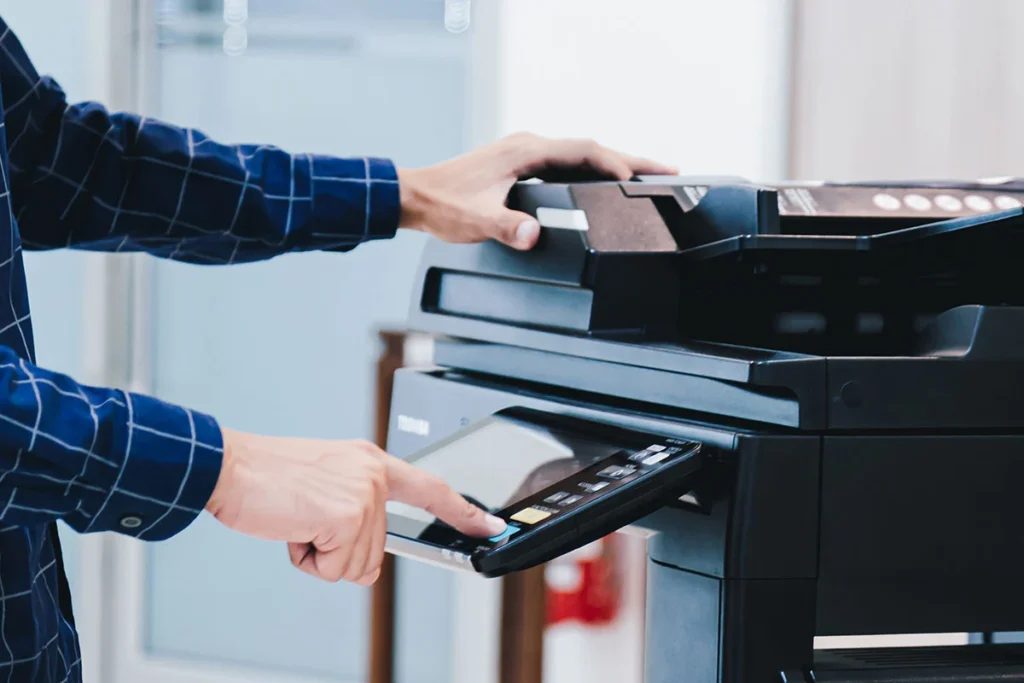1. Understand Printer Calibration
○ Purpose: Printer calibration ensures that the colors in your prints match the colors displayed on your screen. It involves adjusting your printer’s color settings to produce accurate and consistent colors.
2. Use Printer Calibration Tools
○ Built-In Calibration: Many modern printers come with built-in calibration tools. Access these through the printer’s control panel or software.
○ Software Calibration: Use printer calibration software provided by the manufacturer or third-party tools designed for color management.
3. Install or Update Printer Drivers
○ Download Drivers: Ensure you have the latest drivers for your printer from the manufacturer’s website. Updated drivers can improve color accuracy and calibration capabilities.
○ Install Software: Install any additional color management software recommended by the printer manufacturer.
4. Print a Calibration Test Page
○ Access Test Page: From your printer’s settings or calibration software, print a test page designed for color calibration. This page usually contains a variety of color blocks and gradients.
○ Review Results: Compare the printed test page to the on-screen version to identify any color discrepancies.
5. Adjust Printer Settings
○ Color Profiles: Use the correct color profiles (ICC profiles) for your printer, paper, and ink. Install and select profiles that match your printing environment and media.
○ Print Quality Settings: Set the print quality to a high or best setting to ensure that color adjustments are accurately applied.
6. Calibrate Using Color Management Software
○ Select Software: Use color management software like Adobe Photoshop, ColorMunki, or X-Rite i1Profiler.
○ Follow Instructions: Follow the software’s instructions for calibration, which typically involve printing a series of color patches and measuring them with a colorimeter.
○ Save Settings: Save the calibration settings and apply them to your printer for accurate color reproduction.
7. Adjust Printer Profiles
○ Create Custom Profiles: If necessary, create custom color profiles for different paper types and ink combinations. Use color calibration tools to generate these profiles.
○ Apply Profiles: Apply these profiles in your print settings to ensure colors are accurately represented on your chosen media.
8. Monitor and Maintain Calibration
○ Regular Calibration: Recalibrate your printer periodically, especially if you notice color discrepancies or after changing ink cartridges or paper types.
○ Maintain Consistent Environment: Keep your printing environment consistent in terms of lighting and temperature, as these factors can affect color accuracy.
9. Use High-Quality Paper and Ink
○ Paper Compatibility: Use high-quality paper that is compatible with your printer and ink to achieve the best color accuracy.
○ Ink Quality: Use original or high-quality ink cartridges to prevent color shifts caused by inferior inks.
10. Consult the Printer Manual
○ Manufacturer’s Guidelines: Refer to your printer’s manual for specific calibration instructions and recommendations tailored to your printer model.
○ Support Resources: Check the manufacturer’s website for additional resources or troubleshooting tips related to color calibration.
By following these steps, you can effectively calibrate your printer to achieve accurate and consistent color prints, ensuring that your printed materials closely match what you see on your screen. Regular calibration and maintenance will help maintain color accuracy over time.







